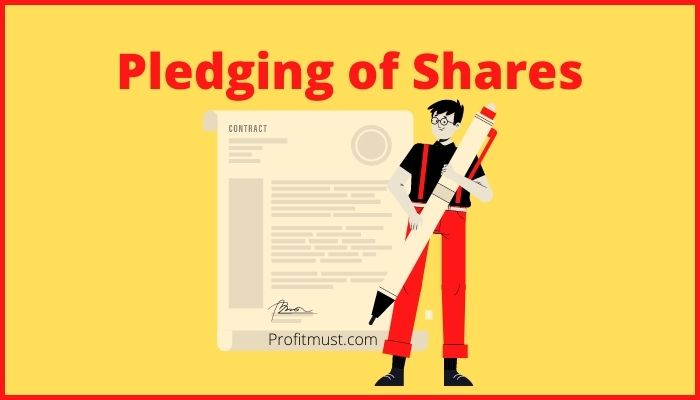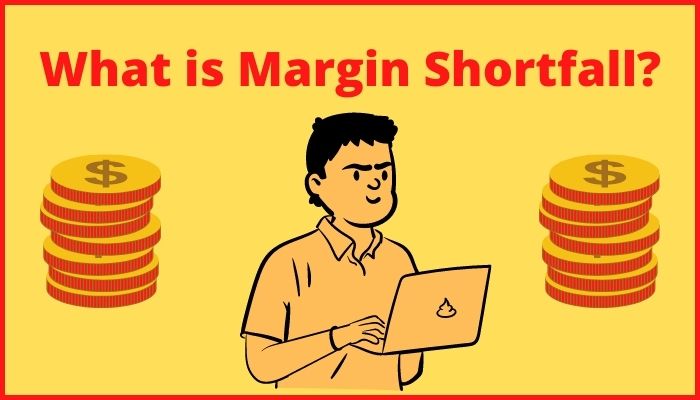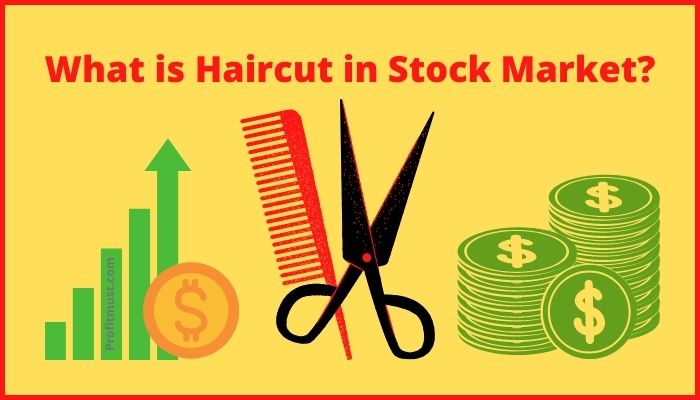Haircut is a normal activity for which everyone usually go every month. However, In stock market it has a different meaning. When you start your investment journey you might encounter the term haircut in share market. So let’s discuss what is haircut in stock market in detail with an example.
Table of Contents
What is Haircut in Stock Market?
Haircut in stock market is the percentage of shortfall among an asset’s market price and the amount that can be employed as collateral for a loan. Since market rates fluctuate over time, there is a gap between these figures, which the lender must account for.
In other words, the haircut value will be determined by the degree of related risk to the lender when the collateral is pledged. The higher the risk, the higher the haircut value, and vice versa.
Haircut in share market is also used for the market maker’s spread in some cases. Since the market maker’s spreads are so narrow, the term haircut is utilized.
Example of Haircut in Share market
In the event of a price drop, the haircut amount is utilised to preserve the lender’s interest. For instance, if you pledge Rs.10 lakhs in securities and the lender provides you Rs.9.50 lakhs, the lender will lose a significant amount of money if the stock drops 20% tomorrow on the Stock Exchange.
In the financial markets, a haircut was utilised to cover such risks. These threats include things like variables that could affect the valuation of the collateral if the lender needs to sell it if the borrower defaults on the loan.
Price, fluctuations, credit quality, asset liquidity, and secondary market value all influence the haircut in finance.

Important Points
- When an investment is used as collateral for a loan, it is given a haircut, which is a discount from its market value.
- The extent of the haircut is mostly determined by the actual asset’s risk. Higher haircuts are applied to riskier investments.
- Market makers can develop or have exposure to silver or haircut-like spreads, which are referred to as haircut finance.
- Haircuts are constantly evolving, and they are influenced by changes in the nature of the investment. If frontline shares become too risky, for instance, the bank or lender may unilaterally raise the haircut on these securities to safeguard the lender’s investment.
How to Evaluate Haircut in Share market?
When compared to other types of investments, haircut in share trading is higher since the risk estimate is the highest. In the context of government bonds, there is no fear of default, repayment is certain, and interest is also assured.
The sole risk is that interest rates will rise, resulting in a high collateral value and a low haircut. This is not the case with equity markets, which are extremely volatile, resulting in excessive haircuts.
To summarize, any security with a higher level of volatility and price unpredictability will naturally have higher haircuts when used as collateral. In both the Indian and global contexts, the haircut for stocks is typically 50%.
Other related Terms
There are the other related terms which used in haircut:

Share Pledging
Share pledging is among the methods used by company promoters to get loans for operating capital, personal purposes, and to support other initiatives or acquisitions.
To obtain a loan, a promoter’s interest in a firm is utilised as collateral. Promoters keep their ownership when pledging shares. Nevertheless, as the value of the stock fluctuates, so does the value of the collateral.
When the price of the shares pledged to a lender falls below a specific threshold, margin call occurs, compelling the promoters to make up the difference in the collateral’s value.
In the aftermath of the Satyam scam in 2009, India’s securities market regulator, Sebi, has created requirements on mandatory declaration of these borrowings.
Collateral Margin
Margin is a term used frequently in the stock market. It allows investors to leverage and participate in transactions without assuming a significant risk.
When you employ pledges, your risk exposure is restricted to the stocks you used as leverage. If you are unable to repay the margin, the stockbroker will liquidate the securities in your margin account to satisfy the loan. The stocks or monies in the margin account are held in trust by the stock broker.
Prior to the new requirement, stockbrokers gave their clients trading restrictions depending on their Demat account holdings in addition to their trading account cash balances. These were basically treated as margin collateral by the broker.

How do you Unpledge shares?
Customers who have pledged shares and have paid back the loan amount or cleared their ledger debits and related dues can unpledge their stocks from the lenders. Following the un pledging of securities, they can be transferred, and the lender’s rights to the pledge will be terminated.
You need to login in to your stock broker account and request for unpledging of the stocks. You can do it yourself as well if your broker provides the unpledge button against the stocks which are pledged.
You need to request before 3:30pm on a business day to get the stocks unpledge on the next business day.
Conclusion
Pledging stock and giving haircut in stock market is not a good idea for beginners. We recommend not to use this option until you are a pro trader.
This is all from our side regarding What is Haircut in Stock Market? Let us know your views about what is haircut in stock market with example in the comment section.
Other interesting blogs related to Haircut in Stock Market
Frequently Asked Questions About What is Haircut in Share Market?
What is haircut for risk?
A risk-based haircut is a lowering of an asset's recognised value less than its actual market price in finance. When a trader pledges securities as collateral for a loan, the lender will frequently reduce the value of the assets by a specified percentage (known as the risk-based haircut).
What is haircut in Angel Broking?
A haircut is the gap in percent among the market value of an investment and the amount that can be used as collateral. For example, if the stock's market value is Rs. 5000 and the collateral is Rs. 2500, the haircut reduction is 50%.
What is margin and haircut?
By maintaining your stocks as collateral, you can get exposure/margin against them in your demat account. For the purposes of determining the collateral value, the haircut in stock market is the amount by which the trading value of your pledged securities is lowered.
What is demat stock margin after haircut?
After the exchange's haircut, the client will receive margin against the stocks. The haircut is the percentage amount used to cover the risk of stock price fluctuations. The haircut was specified by the stock market, and it was the same for all brokers.
Why is it called haircut?
The word haircut became more particularly associated with state-debt holders getting less than par during the Eurozone crisis, especially in the case of the Greek financial downturn. It's the market's way of saying that a big chunk of the debt owed to creditors will be erased.


